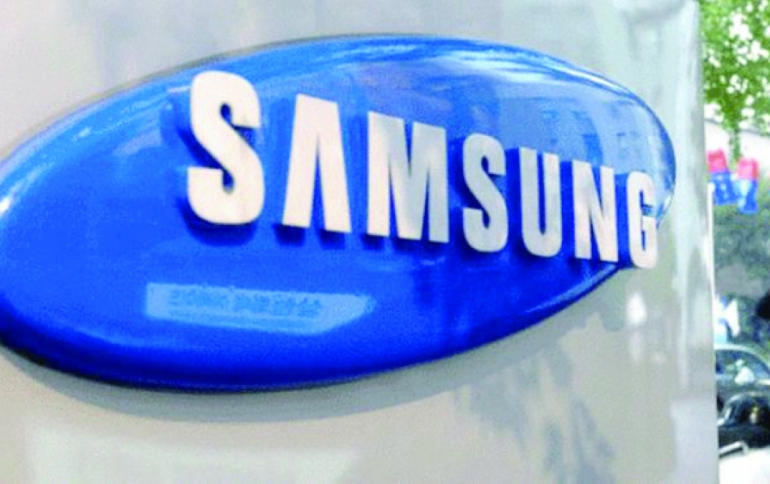
Samsung Reports Strong 3Q Results on Semiconductor Profits
Samsung Electronics nearly tripled its third-quarter profit, largely on the strength of $17.8 billion in chip sales, a company record for any quarter. The growth in the company's semiconductor profit actuallly offset profit sequential declines in Samsung's mobile handset and display businesses.
Samsung's revenue for the quarter was KRW 62.05 trillion, an increase of KRW 14.23 trillion YoY, while operating profit for the quarter posted a record KRW 14.53 trillion, an increase of KRW 9.33 trillion YoY.
In the third quarter, strong demand for high-performance memory chipsets for servers and flagship mobile devices was a contributing factor to the company's overall robust performance. The Semiconductor Business registered significant earnings growth both YoY and QoQ, and the System LSI added to the earnings rally through increased sales of DDIs and image sensors.
Samsung's display panel segment posted an earnings decline despite the expanded sales of flexible OLED panels for premium smartphones. An increase in shipments of flexible displays for Samsung's customers drove an increase in sales. However, QoQ earnings declined due to an increase in start-up costs of the new OLED production line and increased competition within rigid OLED products. For the LCD business, third quarter earnings declined, as an imbalance in supply and demand led to a decrease in the ASP of LCD panels. Further, capacity expansion in the LCD industry continues to impact prices.
The company's Mobile Business saw strong shipments thanks to the launch of Galaxy Note 8 and solid sales of the new Galaxy J series, but its earnings declined QoQ due to the higher sales proportion of mass-market smartphones.
Samsung's TV business saw significant improvements in QoQ earnings driven by increased sales of premium products including QLED TVs. However, due to the higher cost of LCD TV panels and weakening demand of the TV market, YoY earnings were modestly lower.
Looking ahead to the fourth quarter, the company anticipates tight supply and demand conditions to continue for the Memory Business due to strong demand for servers and mobile devices. For the Display Panel segment, increased shipments of flexible OLED products and the release of new rigid OLED panels will improve earnings. However, the LCD segment will be met by weak seasonality, coupled with expanded panel supply. For the Mobile Business, the company will try to maintain solid earnings by increasing flagship sales through the global roll out of the Galaxy Note 8. Meanwhile, the Digital Appliances Business expects to continue revenue growth by ramping up sales of new products including washing machines with QuickDrive technology and POWERstick PRO vacuum cleaners. The TV business will focus on increasing sales of premium products including QLED and ultra-large screen TVs.
Moving on to business prospects for 2018, the company expects earnings to grow primarily from the component businesses, as conditions in the memory market are likely to remain favorable and the company expects increased sales of flexible OLED panels. For the Memory Business, demand for high-density, high-performance NAND will increase, as the need for larger data capacity in servers and mobile devices grows.
The company expects positive growth in the DRAM market, due to the development of technologies in big data, artificial intelligence and machine learning, in which faster processing and analysis of data are critical. The technological advancement of mobile devices with dual camera, 3D sensors and on-device AI will spur DRAM growth. As for next year's outlook for the System LSI and Foundry Businesses, Samsung will continue to drive favorable earnings growth by increasing the supply of 10-nano products and image sensors, and will also focus on strengthening the competitiveness in the sub 7-nano process through investment in the EUV-related infrastructure.
Looking further ahead to 2018, Samsung will focus on expanding V-NAND supply while developing and ramping-up 5th generation V-NAND. As for the fourth quarter DRAM outlook, the company will focus on ramping-up 10nm-class products and expanding sales of differentiated products such as HBM, high bandwidth LPDDR4X.
As for the Foundry Business, although growth is likely to be limited, the company expects to diversify the 10-nano node from mobile to cryptocurrency mining applications, while diversifying the customer base for new 8-nano offerings. For 2018, Samsung will increase supply of 10-nano products and image sensors through mass production in line S3 and transformation of memory line 11 to foundry, respectively, and strengthening sub 7-nano process competitiveness by investing in EUV-related infrastructures.
In the display segment, Samsung will continue seeking growth by addressing market demand for flexible OLED display panels with differentiated technology, as OLED is set to become a mainstream feature in smartphones. Although global competition in the LCD panel business is expected to intensify in 2018, Samsung will strive to ensure its profitability by solidifying partnerships with key customers and enhancing the lineup of ultra-large size, high resolution, quantum dot and frameless panels.
New leaders
Samsung also named a new generation of top managers on Tuesday and promised to reward shareholders with $26 billion in payouts to 2020, as a result of the record third-quarter profit.
The company replaced the leaders of its three main businesses, named CFO Lee Sang-hoon as the likely new board chairman, and said veteran co-CEOs J.K. Shin and Yoon Boo-keun would resign.
Kim Ki-nam, 59, was appointed to lead the Device Solutions division which makes components including memory chips. Koh Dong-jin, 56, would head IT and Mobile Communications, and Kim Hyun-suk, 56, would lead Consumer Electronics.
The changes were effective immediately.
Samsung said it would double dividends next year to 9.6 trillion won and keep them at that level until 2020. It also said 2017 capital expenditure would be its biggest ever, climbing 81 percent to 46.2 trillion won ($41 billion) as it builds new chip factories and clean-rooms to stay ahead of demand for servers and devices with ever greater memory.





















